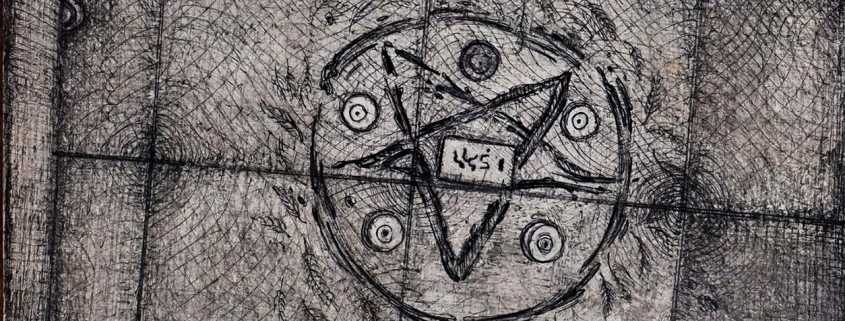DEZVRĂJIT
Nicolae Romanițan
Curator: Horațiu Lipot
STATEMENT
In the artistic center of Cluj Napoca, with its medium specificity for the painting genre, artists usually paint, and more than often beautifully. Realistic, photo or hyper-realistic, and if we talk about abstract compositions, predominate the analytical type, in blocks of color that seek the perfect temperature. They paint on well-defined and prepared parietal supports, the predominant canvas as in traditional artistic centers, is mostly linen. There is also a well-formed system for the primary market, and thus the artworks, even among the young generation are often framed. An equally important part of the same well-defined system, of constant cultural export to the western context, in the last almost 20 years, is the fact that almost all of the artists, be it the institutional or market darling onse, hold doctoral degrees, and regardless of the medium they practice, are all given on the genre of painting. So, in Cluj Napoca, artists paint, and they paint generally beautifully, academically some how.
Nicolae Romanitan’s scenes appear to be a clever mix of painting and drawing in terms of style. The effective depiction of a post-apocalyptic technological singularity is fueled by a composite spatial-pictorial-emotional effect, that blurs the lines between what you feel, what you see, and what seems like a dream. Arranged in the picture plane with the dense materiality of things hastily stuffed into a backpack, the objects in his compositions collapse ubiquitously into the inner architectural and psychological space. The bodies of the characters represented alone-in-the-world, and having the allure of self-portraits masked in scenes from art history, are entangled with the technologcal devices operated not at all symbiotically in respects of the body. This is done through the hardware part of painful implants and not the software one, programmable and amnesiac, where we see moments of true agony, loneliness, defeat, but also tenderness and ecstasy, expressed in a self-taught, manically detailed style, approaching the caricatural part of realism, more specific to the American than European modernism; of course, a major influence of the aftermentioned generation.
These artworks clearly testify for the beauty of a world in or about to collapse, on an accelerated course of total disenchantment, as if a citizen in the year 2050, after taking off his VR headset, notices that in the few years of continu in plos virtual reality in utopian places, the real, material things around him began to ruine, to degrade. A state of grace of the late Anthropocene, at an objective limit of chaos in physical systems, about which another Cluj exponent, the poet Ovio Olaru writes in his volume „Pilotul (The pilot)”
the planet’s rotation
with our buildings
and we posses bones as strong as granite
which we break without risk
in car accidents
we are not perishable, because we have passed the animal stage
and we repair ourselves artificially ” […]

